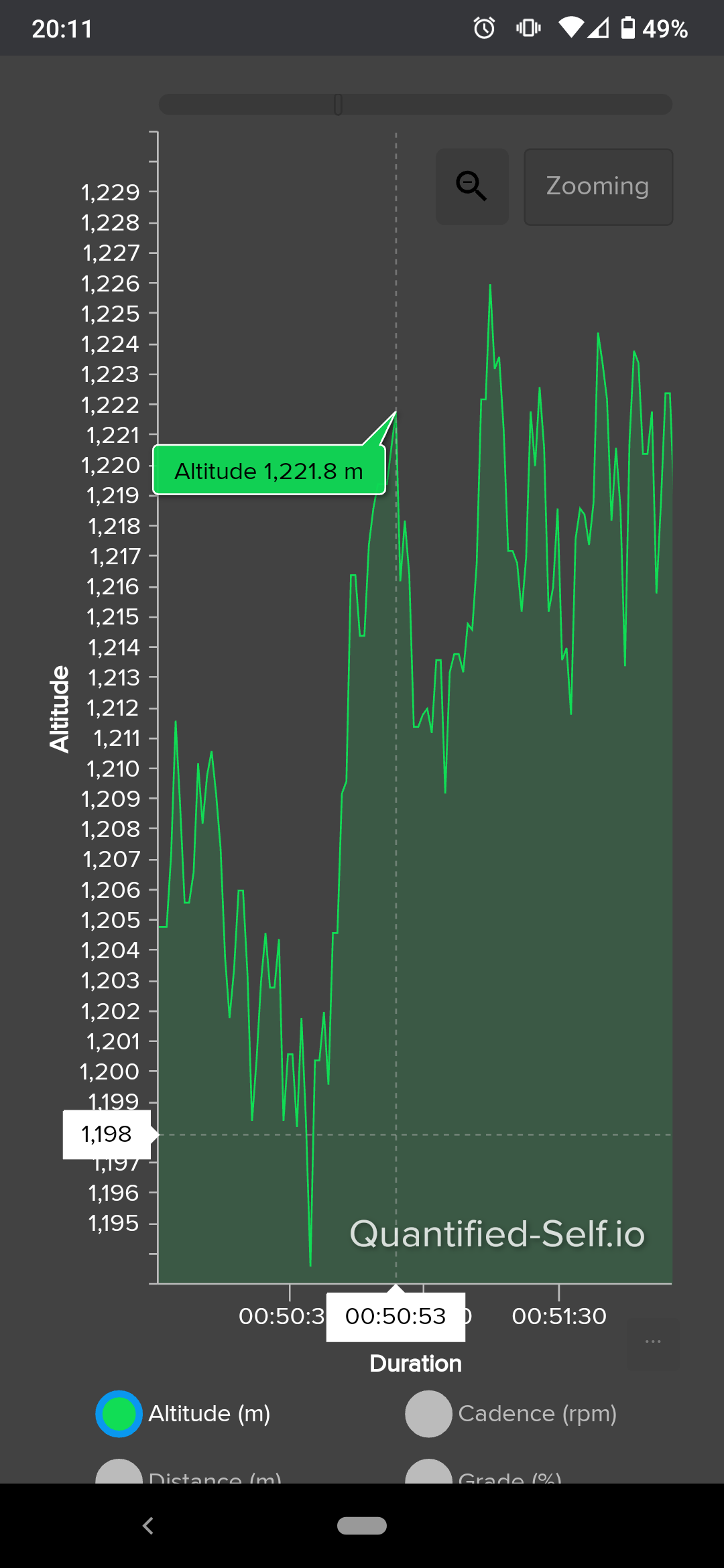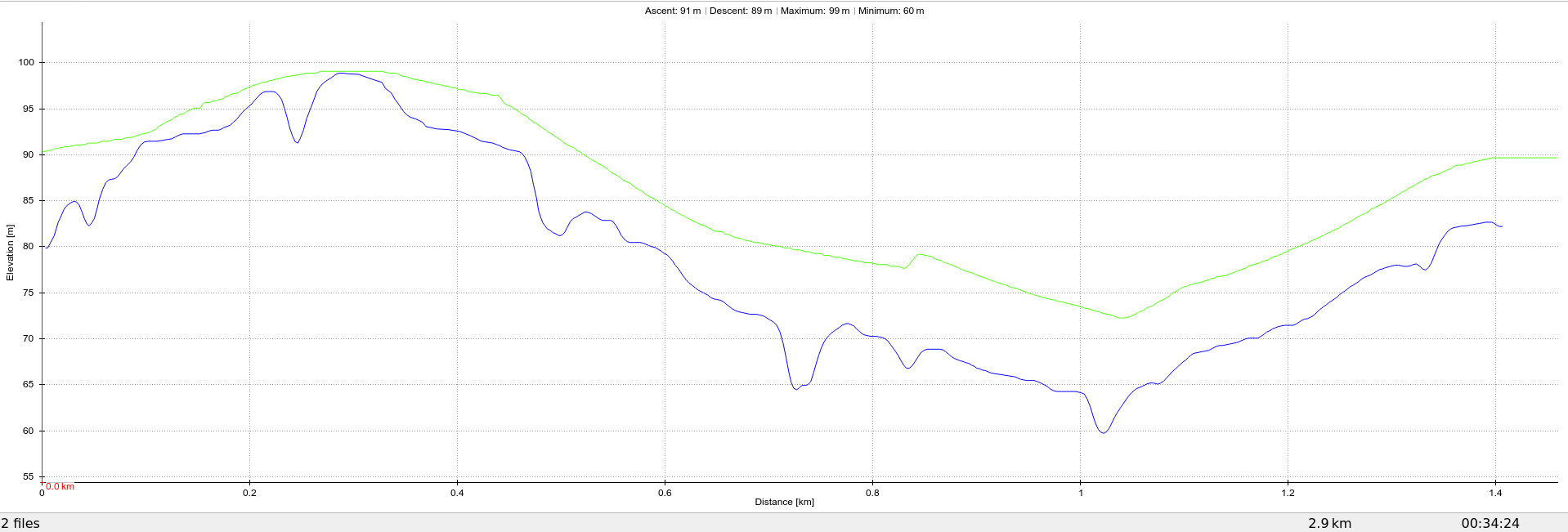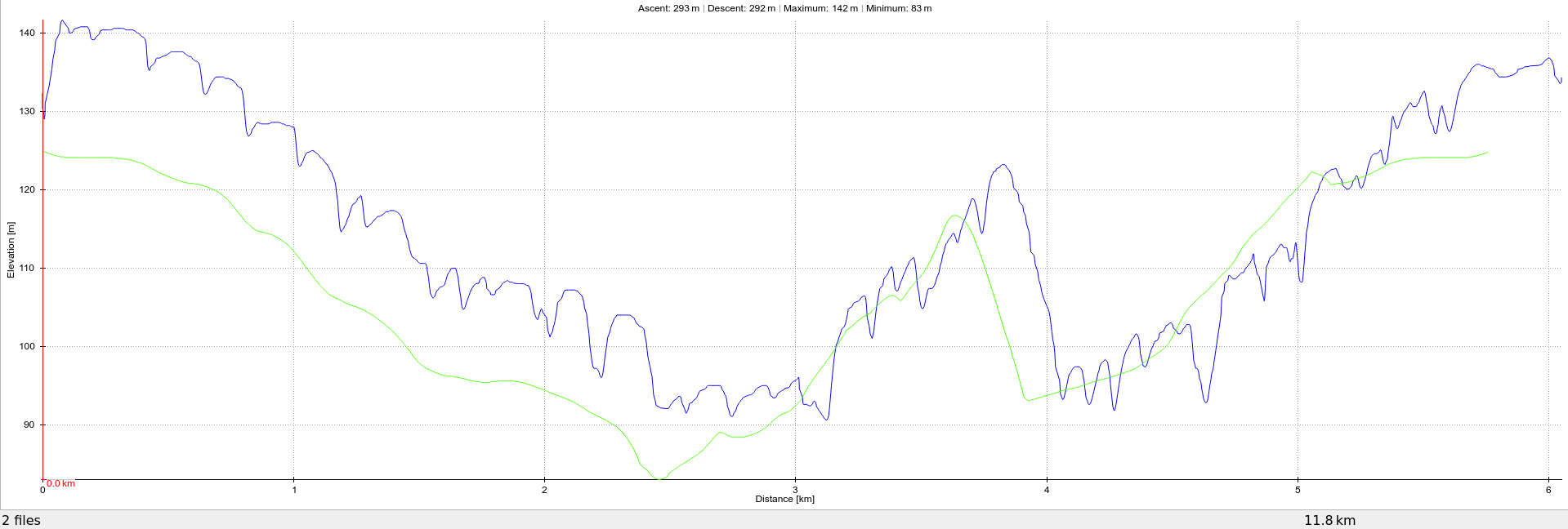Bumpy and inaccurate altitude data with new Suunto 7
-
@daltonthomas
if you zoom in you see a lot of spikes in the alti graph. I saw something similar today with my S9B. Wet condition, watch worn relatively loose on the wrist with the body over the jackets cuff.
It gave me 721m instead of reality around 520m.Back to “if you zoom in”: you gain over 27m within 20 seconds. This would result in over 4’800 meter per hour

Maybe something covered the sensor unintendedly.
I would give it some more tries

-
@daltonthomas So you think you received a completely new watch? That altitude profile still looks really bumpy (I assume it wasn’t actually this way IRL). Could you maybe also post a comparison with the Strava-corrected profile? (in case you use Strava)
A few hours ago, someone else with the same problem posted about it on Reddit: https://www.reddit.com/r/Suunto/comments/kxwp6q/suunto_7_faulty_altitude_measurements/
-
@themrdjj
I am sorry but i am still not using strava. The track is completely without any descent meters, not as showed in the bumpy altitude track from my S7.
Thanks for the Reddit discussion, it seems that more people are suffering with that issue.I found out that the way the watch is used influences the altitude measurement (wearing on left or right hand, attaching on backback). I guess this is because of the coverage of the altitude measurement hole.
@freeheeler
Thanks for the zoom (didn`t know zooming function in quantified itself…:)), now its clear where the meters are coming from.
The next will be a test in variation of the watch fixation (loose, strong). -
@daltonthomas
it would be interesting to know if the spikes come from wearing style or if anything else is the root cause.
…but wearing it on the backback as default, I’m not completely sure if this goes beyond the use case
I don’t want to wake up sleeping dogs and I don’t want to make a big story out of it… but I mentioned some time ago that I personally think that especially S9B has not the very best position of the baro sensor and holes. I was the biggest fan of the A3PS baro sensor position and design! I found the design of S7 was slighy better than on S9B, but I might be wrong.
The design of both S-liners might be very good for most of “real” athletes who have arms like Kilian. I do not have the same athletic shape as Kilian has, hence also a bit bigger arms and wrists and blocking baro holes is way easier for me than for a BMI <20
But it is what it is now.
…and shhhh : I once saw pictures of the S9B housing design and thought about reworking my watch in order to make it less prone to baro holes covering/sealing.
: I once saw pictures of the S9B housing design and thought about reworking my watch in order to make it less prone to baro holes covering/sealing. -
Not really new information.Today similar situation, i did a ski-tour together with my wife. She used the suspicious Suunto7, attached strongly on her left arm and i used the black Suunto7. Totally different data.

https://quantified-self.io/user/rxqh5UVb9LhOn2n6zRIh2gHKXMH2/event/NJi4iiYz0oRMXiM5KI0h
-
@daltonthomas
I hope you’ll be ski touring tomorrow, too… and just for the hell of science, could you both wear the watches very loose and ignore the HR results? Or even put it on your backpack shoulder strap? -
@freeheeler
Tomorrow the conditions are not so good, i guess we are going to stay at home. Next event it`s planned to change the watches and then we are going to wear the watches loose. -
Thank you all for your great help in finding the root cause of the bad behaviour of my Suunto7.
At the end I found out some tricks like attaching the watch to the backpack, fix the watch very strong on my arm to get better altitude results.
Because thats not the way i would like to use this watch i decided to look for another sport watch or go back to my old Ambit2.
Cheers and again thank you
Thomas -
@daltonthomas
hmm… unfortunate to read that…
I would have preferred that the forum and the guys at Suunto could find a solution on that.
But eventually you need to be happy and focus on the activity you like rather than messing around with technology.
Enjoy the sports

-
Perhaps I should also give an update. I think the results were a bit better after receiving the new watch, but still not as accurate as I would have expected.
Anyway, I stopped caring about this, to be honest. I don’t really use the altitude profile in my training anyway and if I ever decide to do so then I still have the Strava correction (I only use Strava to analyse my activities anyway). Also, the comparisons I made in the beginning with my old watch were a bit unfair because there the Strava correction was applied automatically (as it doesn’t have a barometer), so I never got to see the raw data anyway.
I really like everything else about the watch and maybe I’m just expecting too much from it (my OCD wanting perfect data). So for now I’ll keep using it, until it’s time for a new watch.
-
@themrdjj
I don’t want to undermine the valuable work from the field testers, but I think if the watch itself appears to have issues it would be good if you keep sending this info as feedback to Suunto. Where there’s no issue reported, nothing can be fixed. I know that myself with customers having issues with a new design and some of them fix it themselves, you rate the issue not as high as you simply don’t know that they are affected, too. -
@themrdjj said in Bumpy and inaccurate altitude data with new Suunto 7:
Perhaps I should also give an update. I think the results were a bit better after receiving the new watch, but still not as accurate as I would have expected.
Anyway, I stopped caring about this, to be honest. I don’t really use the altitude profile in my training anyway and if I ever decide to do so then I still have the Strava correction (I only use Strava to analyse my activities anyway). Also, the comparisons I made in the beginning with my old watch were a bit unfair because there the Strava correction was applied automatically (as it doesn’t have a barometer), so I never got to see the raw data anyway.
I really like everything else about the watch and maybe I’m just expecting too much from it (my OCD wanting perfect data). So for now I’ll keep using it, until it’s time for a new watch.
This is clearly a problem and should not be occurring. Are the images you have in the initial post from QS or from SA? iOS can’t do landscape graphs. Just want to know how you got them. I often run with an S9 and S7, in virtually every run they match.
-
@freeheeler
Thats the point, focus and enjoy the activity itself and not messing around with technology…:). -
@brad_olwin They are from a program called GPXSee. I first download the initial gpx file from Strava, then I apply the correction on strava.com and redownload the gpx file.
-
@themrdjj said in Bumpy and inaccurate altitude data with new Suunto 7:
@brad_olwin They are from a program called GPXSee. I first download the initial gpx file from Strava, then I apply the correction on strava.com and redownload the gpx file.
Hi,
I read again this post, and this last answer makes me feel that we never see your real Suunto data
only strave and GPXsee representation, with some gpx export.Do you have a QS account ? or any other account where you can view the “real” data from Suunto fit file ?
or eventually share a suunto app link of an activity of yours with the issue, and experts may have a look at them.
-
@mff73 said in Bumpy and inaccurate altitude data with new Suunto 7:
@themrdjj said in Bumpy and inaccurate altitude data with new Suunto 7:
@brad_olwin They are from a program called GPXSee. I first download the initial gpx file from Strava, then I apply the correction on strava.com and redownload the gpx file.
Hi,
I read again this post, and this last answer makes me feel that we never see your real Suunto data
only strave and GPXsee representation, with some gpx export.Do you have a QS account ? or any other account where you can view the “real” data from Suunto fit file ?
or eventually share a suunto app link of an activity of yours with the issue, and experts may have a look at them.
Agreed! We need to see the original data.

